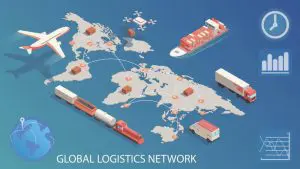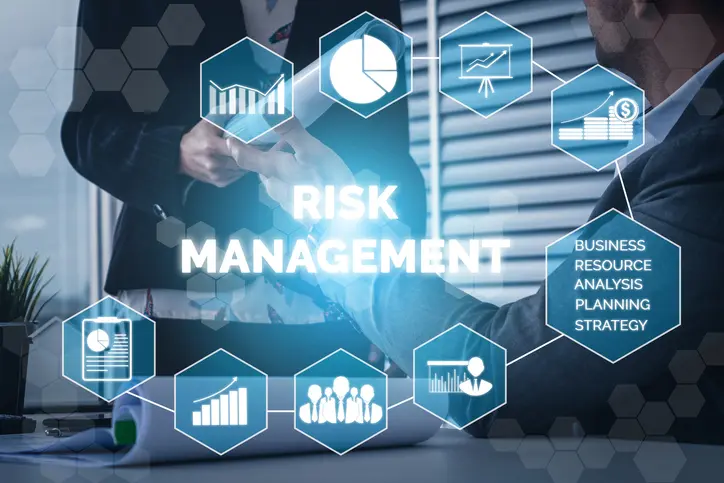Gaining a comprehensive understanding of business operations is key to business growth and success in the current competitive landscape. Two key concepts that often arise in this context are the Value Chain and the Supply Chain. While these terms may seem similar, they represent distinct yet interconnected aspects of a business’s operations. In this article, we’ll explore the nuances of each concept, exploring their definitions, components, and the critical differences between them. By grasping and contrasting these differences, businesses can strategically align their operations to create maximum value for customers and stakeholders.
Definitions of Supply Chain and Value Chain
A Supply Chain refers to the interconnected network of activities involved in the production and distribution of a product or service, from the initial sourcing of raw materials to the delivery of the final product to the end consumer. It encompasses the flow of materials, information, and finances across various stages, including procurement, production, logistics, and distribution. In contrast, the Value Chain represents the sequence of activities undertaken by a company to create value for its customers. It comprises the primary activities directly involved in the creation, sale, and delivery of a product or service, as well as the supporting activities that enable and facilitate these primary functions. Without further ado, let’s simplify things.
Overview and Key Components of Supply Chain
A Supply Chain is an intricate and dynamic system consisting of various essential elements that are integrated to facilitate the seamless movement of products and services from suppliers to customers. These elements consist of:
Procurement and Sourcing
Procurement and sourcing entail discovering and selecting the most suitable suppliers for necessary raw materials, parts, and services. Here we consider elements such as assessing suppliers based on factors like quality, pricing, dependability, and delivery schedules. Efficient procurement management is crucial for ensuring a consistent supply of materials while keeping expenses and potential risks low.
Read our case study on Wells Lamont and the Intuendi Experience and learn how to streamline the procurement process with AI.
Production and Operations
Production and operations highlight the processes of converting raw materials and components into final products or services. This of precedence are processes like manufacturing, assembly, quality control, and testing. Improving production methods and utilising technologies such as automation and lean manufacturing can enhance efficiency and minimise waste.
Our Co-Founder & Scientific Advisor delves into Production Systems in relation to Demand Management.
Distribution and Logistics
Distribution and logistics delineate the flow and storage of completed goods from the manufacturing site to the end recipient, which can involve warehouses, distribution centres, or direct customer delivery. Efficient management of logistics guarantees on-time delivery, reduces transportation expenses, and upholds product integrity across the supply chain.
Integration and Coordination Activities
In order for a Supply Chain to operate efficiently, it is essential that all tasks are coordinated and interconnected between various departments, suppliers, and partners. Good communication, teamwork, and sharing of information are vital for ensuring that operations are aligned, identifying and addressing any obstacles, and adapting to any changes or disruptions in the supply chain.
See our integrations for seamlessly integrated Demand Planning with ANY datasource.
Overview and Key Components of Value Chain
The Value Chain is a set of actions that a company performs to provide value to its customers. It makes prominent both the main activities that directly contribute to value creation and supporting activities that help these main functions. Let’s take a look at the key elements:
Inbound Logistics
Inbound logistics are those operations that entail the receiving, managing, and storing raw materials and components sourced from suppliers. The point of interest centres around inventory control, handling of materials, and maintaining good relationships with suppliers. Effective inbound logistics guarantee that necessary inputs are available promptly for production operations.
Operations
All businesses are established upon turning a big idea into reality. As such, operations involve the steps needed to turn raw materials into final products or services. Production, assembly, testing, packaging, and quality assurance are key at this stage. Streamlined operations effectuate the optimisation of value and decrease in expenses and inefficiencies.
Outbound Logistics
The tasks associated with distributing final products and services to customers are called outbound. Of paramount importance in this sphere of business are factors such as managing orders, storing goods, distributing items, and overseeing transportation. Successful outbound logistics guarantee on-time delivery, reduce shipping expenses, and uphold product quality.
Marketing and Sales
How do you alert customers about the product or service you are offering? Marketing and sales efforts are centred around promoting and selling products or services to customers through activities such as advertising, promotions, pricing tactics, and managing customer relationships. Successful marketing and sales tactics play a key role in creating value by attracting and keeping customers.
Service
The manner you treat your customer can be a make-or-break in customer retention. Service activities consist of businesses offering assistance and support to customers after they make a purchase. Here we value tasks such as setting up products, fixing any issues, providing training, and offering ongoing support. Providing top-notch customer service plays a crucial role in ensuring customer satisfaction, building loyalty, and creating long-lasting value for the company.
Support Activities and Infrastructure
Support activities and infrastructure are the functions and systems that support and enhance the primary activities of the Value Chain. Ruminate on crucial elements like managing human resources, developing technology, purchasing goods and services, and overall administration. Effective support activities and infrastructure are crucial for the smooth functioning of the Value Chain.
Key Differences Between Supply Chain and Value Chain
Albeit the Supply Chain and the Value Chain are inextricably linked, they are several differential factors:
Focus and Objectives
The Supply Chain focuses on the effortless flow of materials, information, and finances throughout the production and distribution process to deliver products or services to customers efficiently and cost-effectively. On the other hand, the Value Chain focuses on activities that add value for customers and give the company a competitive edge. Its goal is to enhance value creation by improving processes and utilising core strengths.
Scope of Activities
The Supply Chain covers a wide range of activities, including procurement, production, logistics, and distribution, involving coordination among multiple organisations and partners such as suppliers, manufacturers, and logistics providers. Conversely, the Value Chain centres on activities within a single organisation, from acquiring raw materials to delivering the final product or service to customers, emphasising internal processes and functions that create value.
Impact on Business Strategy
The Supply Chain involves a wide range of tasks such as sourcing, manufacturing, transportation, and delivery, involving different organisations and collaborators. It requires coordinating with external parties like suppliers, producers, and logistics companies. Dissimilarly, the Value Chain concentrates on the internal operations of a single organisation, from sourcing materials to delivering the final product or service to customers. It highlights the internal processes and functions that add value to the product or service.
Stakeholder Engagement
The Supply Chain concerns itself with an entire spectrum of stakeholder engagements from suppliers and manufacturers to logistics providers and customers. Effective stakeholder management and collaboration are essential for ensuring the smooth flow of materials and information across the entire supply network.
In contrast, the Value Chain’s primary concerns are engaging with internal stakeholders, such as employees, departments, and functional areas, to optimise value creation processes. External stakeholder engagement is typically limited to customers and, to some extent, suppliers
Intersection Between Supply Chain and Value Chain
Although the Supply Chain and the Value Chain can be distinguished by various concepts, they are interrelated and support one another in driving overall business growth.
How the Supply Chain Supports the Value Chain
A well-organised and effective Supply Chain is crucial for supporting the Value Chain and facilitating value generation for customers. The Supply Chain plays a key role in ensuring the timely availability of necessary materials and components, which in turn allows the Value Chain’s core activities like operations and logistics to operate seamlessly. Additionally, the Supply Chain’s emphasis on cost efficiency, flexibility, and collaboration helps the Value Chain deliver products or services in a cost-effective and competitive manner, ultimately enhancing value creation overall.
Optimising Both Chains for Enhanced Business Performance
In order to maximise business performance, it is important to coordinate and optimise both the Supply Chain and Value Chain. This requires aligning strategies, processes, and activities to minimise duplication, cut costs, and enhance supply chains and value creation. Communication, collaboration, and sharing information between the Supply Chain and Value Chain teams are essential for identifying areas for improvement, streamlining operations, and addressing any potential obstacles or inefficiencies.
Using Value Chain Principles in the Supply Chain
While the Supply Chain and Value Chain are characterised by distinct features, the undergirding aspects of value creation in the Value Chain can be extrapolated to various aspects of the Supply Chain to improve efficiency and facilitate greater value creation.
Inbound Logistics
 Applying Value Chain principles to inbound logistics necessitates the strengthening of supplier relationships, implementing effective inventory management strategies, and leveraging technology for efficient material handling and storage. Enhancing these operations helps businesses reduce costs, increase flexibility, and ensure timely access to resources for production.
Applying Value Chain principles to inbound logistics necessitates the strengthening of supplier relationships, implementing effective inventory management strategies, and leveraging technology for efficient material handling and storage. Enhancing these operations helps businesses reduce costs, increase flexibility, and ensure timely access to resources for production.
Manufacturing and Production
Integrating Value Chain concepts into manufacturing and production may denote embracing lean manufacturing practices, enforcing quality control standards, and promoting ongoing improvement efforts. Through streamlining production processes and minimising inefficiencies, businesses can boost operational effectiveness, enhance product quality, and ultimately provide more value to customers.
Outbound Logistics
Utilising Value Chain concepts in outbound logistics may include improving distribution networks, utilising cutting-edge logistics technologies, and streamlining order processing and delivery systems. By enriching outbound logistics operations, businesses can enhance customer satisfaction, decrease delivery times, and guarantee efficient and cost-effective product delivery to customers.
Final Thoughts on Strategic Importance
Maximising operations and establishing a sustainable competitive advantage is of vital importance for companies. The Supply Chain focuses on efficiently managing the flow of materials and information throughout the production and distribution network, while the Value Chain concentrates on activities that directly add value for customers.
Understanding the key differences between Supply Chain and Value Chain enables companies to align their strategies and allocate resources effectively, ensuring that both chains work together to support overall business goals. By incorporating value creation principles into Supply Chain management, companies can improve efficiency, cut costs, and provide superior value to customers.
The strategic significance of effectively managing both the Supply Chain and the Value Chain lies in their ability to shape a company’s competitive position, drive profitability, and promote long-term growth. When continuously optimising these interconnected chains, businesses can remain agile, adapt to market changes, and better meet evolving customer demands.
In today’s dynamic business environment, the collaboration and key differences between the Supply Chain and the Value Chain is of unparalleled importance for organisations looking to succeed and surpass their competitors. Embracing this collaboration and fostering a culture of continuous improvement across both chains can open up new avenues for innovation, operational excellence, and sustained value creation for all stakeholders.
Grow revenue and drive results with a proven process, and the most experienced demand planning team.






